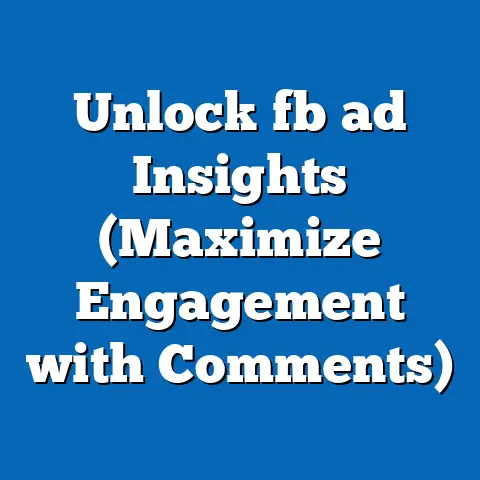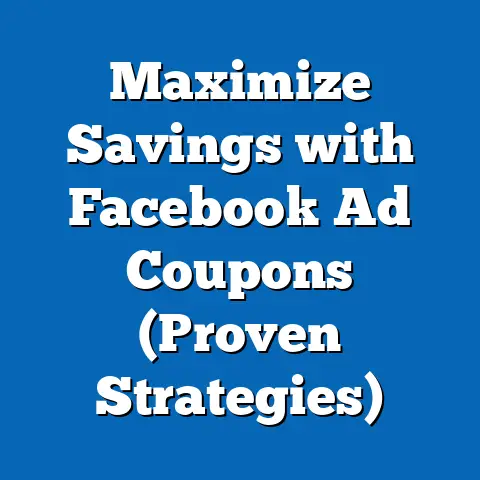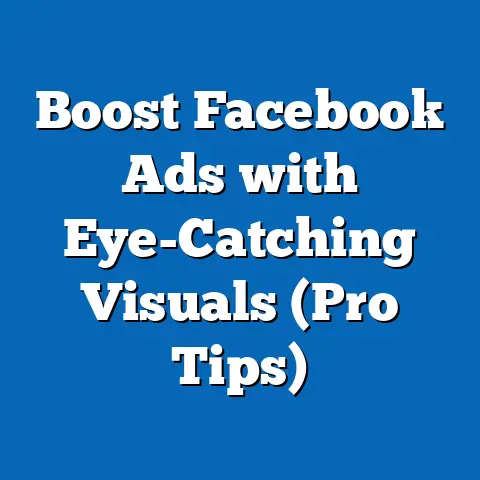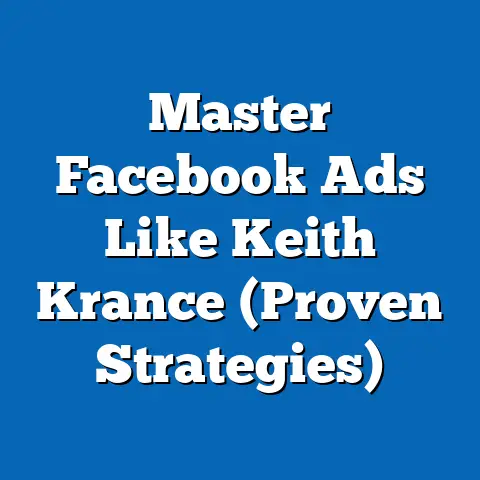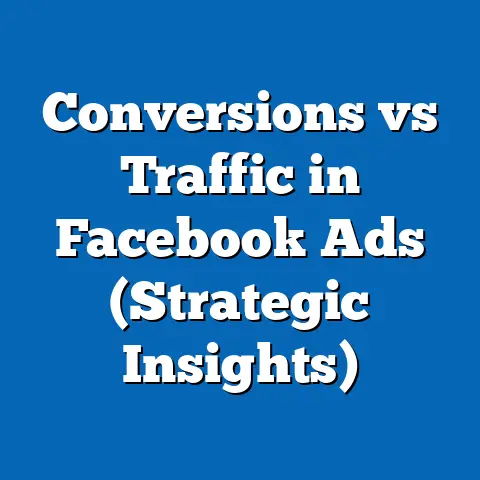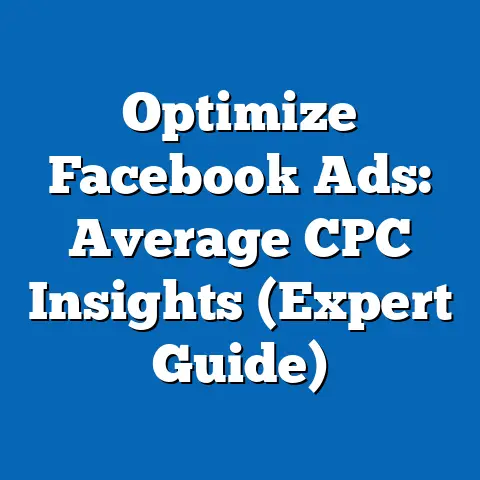Create Irresistible Facebook Ads with This Template (Pro Guide)
Imagine this: you’re a small business owner, pouring your heart and soul into your venture. You’ve got a fantastic product or service, but getting it in front of the right people feels like an uphill battle. Then, you discover the power of Facebook Ads, and suddenly, everything changes. You implement a well-thought-out strategy, craft compelling ads using a proven template, and watch as your sales skyrocket, engagement levels soar, and brand awareness reaches new heights. The feeling is exhilarating – a mix of relief, excitement, and pure satisfaction. You’ve transformed your small business into a thriving enterprise, all thanks to the strategic use of Facebook advertising. This is the power of Facebook Ads, and I’m here to show you how to replicate this success.
In this guide, I’ll walk you through the process of creating irresistible Facebook Ads using a template, turning your advertising efforts into a lead-generating, revenue-driving machine. I’ve spent years honing my skills in the digital marketing world, and I’ve seen firsthand how a well-structured Facebook ad campaign can revolutionize a business. Let’s dive in!
Understanding Facebook Ads
Facebook Ads have become a cornerstone of digital marketing. With billions of active users, Facebook offers an unparalleled platform to reach a targeted audience. According to Statista, Facebook boasts over 2.9 billion monthly active users as of early 2024, making it a prime location for businesses to connect with potential customers.
The evolution of Facebook advertising has been remarkable. Initially, it was a simple way to boost posts and gain likes. Now, it’s a sophisticated system with advanced targeting options, diverse ad formats, and powerful analytics. This evolution means you can pinpoint your ideal customer with incredible accuracy, ensuring your message reaches the people most likely to convert.
Facebook offers various ad formats, each with its unique advantages:
- Image Ads: Simple, visually appealing ads that are great for showcasing products or services.
- Video Ads: Engaging and dynamic, perfect for storytelling and capturing attention.
- Carousel Ads: Allow you to display multiple images or videos in a single ad, ideal for showcasing a range of products or highlighting different features.
- Slideshow Ads: Create a video-like experience using a series of images, which can be a cost-effective alternative to video ads.
Understanding these formats is the first step in creating effective ads that resonate with your audience.
Takeaway: Facebook Ads are a powerful tool for reaching a massive, targeted audience. Familiarize yourself with the different ad formats to choose the best option for your business goals.
The Importance of a Template
Imagine trying to build a house without a blueprint. You might end up with something functional, but it’s unlikely to be efficient, aesthetically pleasing, or structurally sound. The same principle applies to Facebook Ads. Without a structured template, your ads might be functional, but they won’t be as compelling or effective as they could be.
A template provides a framework that streamlines the ad creation process, ensuring consistency and quality across all your campaigns. It helps you focus on the core elements that make an ad successful, such as a captivating headline, engaging visuals, compelling copy, and a clear call to action.
Think of a “winning template” as a tried-and-true formula that encapsulates the key elements of effective Facebook Ads. It’s a starting point that you can customize and adapt to fit your brand and audience, but it ensures you’re always starting from a position of strength.
Takeaway: A well-structured template is crucial for creating compelling, consistent, and effective Facebook Ads. It saves time, ensures quality, and helps you focus on the elements that drive results.
Breaking Down the Template
Let’s dive into the anatomy of a winning Facebook Ad template. This template is designed to capture attention, engage your audience, and drive conversions. Here’s a detailed breakdown of each section:
Attention-Grabbing Headline
Your headline is the first thing people see, so it needs to be a showstopper. It’s your chance to grab their attention and make them want to learn more. Here are some strategies for crafting headlines that capture attention:
- Use Numbers: Headlines with numbers tend to perform well because they promise specific, quantifiable benefits. For example, “5 Ways to Increase Your Website Traffic” is more compelling than “Increase Your Website Traffic.”
- Ask a Question: Questions pique curiosity and encourage people to click. “Are You Making These Common Marketing Mistakes?” is a great example.
- Promise a Solution: Highlight the problem your product or service solves. “Finally, a Solution to End Sleepless Nights” speaks directly to a pain point.
- Use Power Words: Words like “secret,” “ultimate,” “proven,” and “essential” can add impact to your headline. “The Ultimate Guide to Mastering Facebook Ads” sounds more authoritative and valuable.
Engaging Visuals
A picture is worth a thousand words, and in the world of Facebook Ads, visuals are king. High-quality images or videos can instantly capture attention and convey your message in a way that text alone cannot. Here are some tips for choosing the right visuals:
- Relevance: Make sure your visuals are directly relevant to your product, service, or offer.
- High Quality: Use high-resolution images and videos that are clear, crisp, and visually appealing.
- Emotionally Engaging: Choose visuals that evoke emotion and connect with your audience on a personal level.
- Brand Consistency: Ensure your visuals align with your brand’s style and aesthetic.
I once worked with a local bakery that was struggling to gain traction on Facebook. Their initial ads used generic stock photos of baked goods. We decided to replace them with high-quality photos of their actual products, showcasing their unique designs and delicious-looking treats. The result was a dramatic increase in engagement and orders.
Compelling Copy
Your ad copy is your opportunity to tell a story, highlight the benefits of your product or service, and persuade people to take action. Here’s how to write persuasive ad copy that speaks to the pain points and desires of your target audience:
- Identify the Problem: Start by identifying the problem your product or service solves.
- Offer a Solution: Clearly explain how your product or service provides a solution to that problem.
- Highlight the Benefits: Focus on the benefits, not just the features. How will your product or service improve their lives?
- Use Emotion: Connect with your audience on an emotional level by using language that resonates with their feelings and aspirations.
- Keep it Concise: People have short attention spans, so keep your copy concise and to the point.
Clear Call to Action
Your call to action (CTA) is the final nudge that encourages people to click, visit your website, make a purchase, or take whatever action you desire. Here’s how to create a strong CTA that drives clicks and conversions:
- Use Action Verbs: Start your CTA with an action verb, such as “Shop Now,” “Learn More,” “Sign Up,” or “Get Started.”
- Create Urgency: Use language that creates a sense of urgency, such as “Limited Time Offer” or “Shop Now Before It’s Gone.”
- Make it Prominent: Ensure your CTA is visually prominent and easy to see.
- Test Different CTAs: Experiment with different CTAs to see which ones perform best.
Social Proof
People are more likely to trust recommendations from others than they are to trust advertising claims. Social proof, such as testimonials, reviews, or user-generated content, can be incredibly effective in building trust and credibility. Here’s how to incorporate social proof into your ads:
- Testimonials: Include positive testimonials from satisfied customers.
- Reviews: Highlight positive reviews from reputable sources.
- User-Generated Content: Feature photos or videos of customers using your product or service.
- Ratings and Badges: Display ratings and badges from trusted review sites.
Takeaway: A winning Facebook Ad template includes an attention-grabbing headline, engaging visuals, compelling copy, a clear call to action, and social proof. Each element plays a crucial role in capturing attention, building trust, and driving conversions.
Crafting Your Ad Using the Template
Now that you understand the key elements of a winning Facebook Ad template, let’s put it into practice. Here’s a step-by-step guide on how to use the template to create a Facebook Ad:
- Choose Your Objective: Start by selecting the right objective for your ad campaign. Are you trying to drive traffic to your website, generate leads, or increase sales? Facebook offers a variety of objectives to choose from, so select the one that aligns with your business goals.
- Define Your Audience: Use Facebook’s targeting options to define your target audience. You can target people based on demographics, interests, behaviors, and more.
- Select Your Ad Format: Choose the ad format that best suits your message and visuals. Image ads are great for simple product shots, while video ads are perfect for storytelling.
- Craft Your Headline: Use the strategies we discussed earlier to create an attention-grabbing headline that captures attention.
- Choose Your Visuals: Select high-quality images or videos that are relevant to your product or service and emotionally engaging.
- Write Your Ad Copy: Use the tips we discussed earlier to write persuasive ad copy that speaks to the pain points and desires of your target audience.
- Create Your Call to Action: Use action verbs, create urgency, and make your CTA visually prominent.
- Incorporate Social Proof: Include testimonials, reviews, or user-generated content to build trust and credibility.
- Set Your Budget and Schedule: Determine how much you’re willing to spend on your ad campaign and set a schedule for when you want your ads to run.
- Review and Publish: Before publishing your ad, review it carefully to make sure everything is accurate and error-free.
Let’s say you’re selling a new line of organic skincare products. Here’s how you might use the template to create a Facebook Ad:
- Headline: “Finally, Organic Skincare That Actually Works!”
- Visual: A high-quality photo of a woman with glowing skin using your product.
- Ad Copy: “Tired of harsh chemicals and artificial ingredients? Our organic skincare line is made with natural ingredients that nourish your skin and leave you feeling refreshed and radiant. Say goodbye to dryness, irritation, and blemishes, and hello to healthy, glowing skin!”
- Call to Action: “Shop Now and Get 20% Off Your First Order!”
- Social Proof: “I’ve been using this skincare line for a month, and my skin has never looked better! It’s gentle, effective, and smells amazing.” – Sarah J.
Takeaway: Follow these steps to use the template to create a Facebook Ad that captures attention, engages your audience, and drives conversions. Personalize the template to fit your brand voice and audience for maximum impact.
Targeting Your Audience
Targeting your audience effectively is crucial for the success of your Facebook Ad campaigns. You can have the most compelling ad in the world, but if it’s not shown to the right people, it won’t generate the results you’re looking for.
Facebook offers a variety of targeting options that allow you to define and segment your target audience with incredible precision. Here are some of the most important targeting options:
- Demographics: Target people based on age, gender, location, education, job title, and more.
- Interests: Target people based on their interests, hobbies, and passions.
- Behaviors: Target people based on their online behaviors, such as their purchase history, website visits, and engagement with other Facebook Pages.
- Custom Audiences: Create custom audiences based on your existing customer data, such as email lists or website visitors.
- Lookalike Audiences: Create lookalike audiences based on your custom audiences. Facebook will find people who are similar to your existing customers, expanding your reach to new potential customers.
I once worked with an e-commerce store that was selling high-end coffee beans. Initially, they were targeting a broad audience with limited success. We decided to narrow their targeting to people who had expressed an interest in coffee, gourmet food, and luxury goods. We also created a custom audience based on their existing customer email list and a lookalike audience based on that custom audience. The result was a significant increase in sales and a much higher return on investment.
Takeaway: Audience targeting is crucial for the success of your Facebook Ad campaigns. Use Facebook’s targeting options to define and segment your target audience effectively, and consider creating custom audiences and lookalike audiences to maximize your reach.
Testing and Optimization
Creating a great Facebook Ad is just the first step. To truly maximize your results, you need to continuously test and optimize your ads based on data and feedback.
A/B testing, also known as split testing, is the process of testing different variations of your ads to see which ones perform best. You can test different headlines, visuals, ad copy, CTAs, and targeting options.
Here are some key metrics to monitor for success:
- Click-Through Rate (CTR): The percentage of people who see your ad and click on it. A high CTR indicates that your ad is relevant and engaging to your target audience.
- Cost Per Click (CPC): The amount you pay each time someone clicks on your ad. A low CPC indicates that your ad is efficient and cost-effective.
- Conversion Rate: The percentage of people who click on your ad and then take a desired action, such as making a purchase or filling out a form. A high conversion rate indicates that your ad is effectively driving results.
- Return on Ad Spend (ROAS): The amount of revenue you generate for every dollar you spend on advertising. A high ROAS indicates that your ad campaign is profitable.
I always tell my clients, “Don’t fall in love with your ads.” What I mean is, you need to be willing to kill your darlings if they’re not performing well. Data should always trump your personal preferences.
Takeaway: A/B testing is essential for optimizing your Facebook Ad campaigns. Monitor key metrics such as CTR, CPC, conversion rate, and ROAS to make informed adjustments and improve ad performance.
Real-Life Case Studies
Let’s take a look at some real-life examples of businesses that have successfully used well-structured Facebook Ads based on a template:
- Example 1: E-commerce Fashion Brand: This brand used a carousel ad format to showcase multiple products in a single ad. They used high-quality photos, compelling ad copy that highlighted the benefits of their clothing, and a clear call to action that encouraged people to “Shop Now.” They also included testimonials from satisfied customers to build trust and credibility. As a result, they saw a 30% increase in sales and a significant boost in brand awareness.
- Example 2: Local Restaurant: This restaurant used a video ad to showcase their delicious food and inviting atmosphere. They used upbeat music, engaging visuals, and ad copy that highlighted their unique menu items and special offers. They also included a map and directions to their restaurant, making it easy for people to find them. As a result, they saw a 20% increase in foot traffic and a noticeable bump in reservations.
- Example 3: Online Course Provider: This company used an image ad to promote their online course. They used a professional-looking image, a compelling headline that promised to teach people valuable skills, and ad copy that highlighted the benefits of taking their course. They also included a testimonial from a satisfied student to build trust and credibility. As a result, they saw a 25% increase in course enrollments and a significant boost in revenue.
These case studies demonstrate the transformative potential of well-crafted Facebook Ads based on a template. By focusing on the key elements of a winning ad, these businesses were able to capture attention, engage their audience, and drive impressive results.
Takeaway: These real-life case studies demonstrate the power of well-structured Facebook Ads. By focusing on the key elements of a winning ad, businesses can achieve impressive results.
Conclusion
Facebook Ads offer an incredible opportunity to reach a massive, targeted audience and drive meaningful results for your business. By using a well-structured template, you can streamline the ad creation process, ensure consistency and quality across your campaigns, and focus on the elements that truly matter.
Remember, the key to success with Facebook Ads is to experiment, test, and optimize continuously. Don’t be afraid to try new things, and always be willing to adapt your strategy based on data and feedback.
I’ve seen firsthand the transformative potential of Facebook Ads, and I’m confident that with practice and persistence, you can create your own irresistible Facebook Ads that drive results.
Call to Action
Now it’s your turn! I encourage you to take action by implementing the template and strategies we’ve discussed in this guide. Share your experiences with Facebook Ads in the comments below, or reach out for further guidance.
And don’t forget to subscribe to updates for more insights into digital marketing strategies. Together, we can unlock the full potential of Facebook Ads and transform your business into a thriving enterprise.

